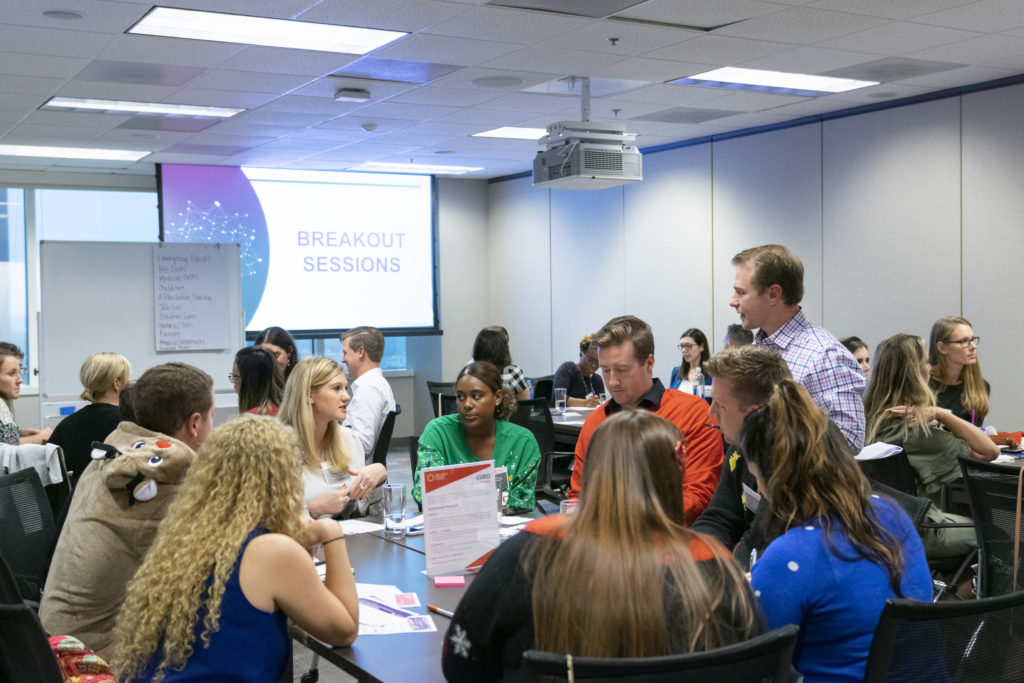Why aren’t millennials using traditional workplace benefits like retirement plans and how can employers better address their financial wellness needs?

Strong benefit programs can attract and retain top talent. They also create happier and healthier employees. As the largest generation in the U.S. labor force, attracting and retaining millennial talent is crucial to successful businesses. In fact, one-in-three American labor force participants (35 percent) are millennials.
Why aren’t millennials using traditional workplace benefits like retirement plans?
Organizations are diverse and so are their employees’ benefits needs, especially when it comes to the millennial generation. Robust benefits for millennials can make hiring in a tough job market easier. By better understanding millennials’ financial needs, businesses can craft more targeted benefits programs. Employers can boost retention rates and increase employee happiness by catering benefits to millennials’ needs.
Most employers’ primary financial benefit is a retirement program. In fact, close to 80 percent of employees have access to a retirement program. But only a third of Americans are using them to save for retirement. And only one in five millennials are saving enough to be on track for retirement.
A primary financial concern facing millennials is outstanding student loan debt. The average amount of student debt held by millennials is $30,000. Many millennials focus on paying down this debt before saving for retirement. Often, employees are in their 30’s or 40’s before they start contributing aggressively to retirement plans.
Because millennials are often just starting out in their career, they are more likely to work in low-wage positions. Lower wages affect how employees plan their financial lives. They may prioritize housing, paying down debt, and childcare over future planning. Lower wage workers are less likely to contribute to retirement programs as well.
Understanding these issues is critical when companies consider the structure of benefit programs. So how do savvy employers engage and attract millennials with benefit plans and how can employers better address their financial needs?
1. Focus on Financial Wellness
Financial wellness programs let businesses offer more targeted benefits and guidance. For millennials, they can help address specific financial issues. This leads to more confident financial decisions. Platforms like Edukate, a Rise of the Rest pitch competition finalist in Orlando, assess employees’ individual financial needs. Then, employees get recommendations on next steps and learn about their particular financial situation. Guided paths and benefit recommendations help employees make sense of their entire financial plan.
Guided paths and benefit recommendations help employees make sense of their entire financial plan.
Chris Whitlow, CEO of Edukate
2. Customize Benefit Offerings
Successful benefit programs also customize benefit offerings. For example, millennials with student loans can get access to student loan repayment help. Employers can offer student loan matches directly within a financial wellness program. Older employees focused on retirement can learn about retirement benefits.
As millennial employees learn about financial topics, their goals can change too. Saving for a house or creating an HSA can all start with strong financial wellness. Financial wellness goes beyond a simple budgeting app or benefits sign up page. It provides targeted guidance to employees in the ways they need most, which is especially key for the millennial workforce.

3. Take Advantage of Technology
Finally, one key difference between millennials and other employees is their use of technology. It’s no secret that millennials are early adopters of new technology platforms and products. Nearly 20 percent of them use a smartphone as their primary Internet device.
Strong financial wellness programs targeting millennials should prioritize technological solutions. From benefit selections to education and messaging, technology should be a primary focus. A major advantage of tech-driven financial wellness programs is their on-demand nature. Employees can get the guidance they need when they need it. This could be either at work in an HR office or at their kitchen table with their spouse.
The Benefits of Good Benefits
The job market, especially in Orlando, is competitive. That’s why having an effective and successful workforce benefit program is more important than ever to attracting and retaining top talent. Strong financial wellness programs can make hiring easier, and employees who achieve financial wellness report being happier at work. These can reduce turnover and reduce hiring costs as well.
As millennials and younger generations become an increasingly larger percentage of the workforce, employers can no longer only offer traditional financial benefits like retirement. Holistic financial wellness programs are a much more attractive option. These programs point employees to targeted solutions in their own financial lives. Millennials are happier and more productive both in and out of the office when employers better assist their real financial needs.




